Effect of Incidence Angle on Entropy Generation in the Boundary Layers on the Blade Suction Surface in a Compressor Cascade
Abstract
1. Introduction
2. Experimental Method
3. Approximation Method for EGR
4. Results and Discussions
4.1. Separation Bubble Characterization
4.2. Instantaneous Flow Fields
4.3. Entropy Analysis
5. Conclusions
Author Contributions
Funding
Conflicts of Interest
Nomenclature
| i | Incidence angle |
| x, z | Physical space coordinates |
| C | Chord length |
| H | Span |
| p | Pitch length |
| Re | Reynolds number of the inlet flow |
| β | Stagger angle |
| S’’’ | Pointwise volumetric entropy generation rate |
| μ | Dynamic viscosity |
| Φ | Viscous dissipation |
| ρ | Fluid density |
| ε | Turbulent dissipation |
| T | Absolute temperature |
| Time-averaged streamwise velocity | |
| Time-averaged normal velocity | |
| w’ | Streamwise velocity fluctuation |
| u’ | Normal velocity fluctuation |
| δ | Boundary layer thickness |
| ν | Kinematic viscosity |
| q2 | Sum of velocity fluctuation |
| ()δ | Value at the boundary layer edge |
| S’’ | Entropy generation rate per unit surface area |
| S-Total | Pointwise entropy generation rate per unit surface area |
| Sz’ | The total EGR calculated by integrating S’’’ in the streamwise coordinates |
| Se’ | The total EGR calculated by integrating S’’’ in the entire streamwise range |
| S-Viscous | Entropy generation caused by the viscous effect |
| S-Re SS | Entropy generation caused by the Reynolds shear stress production |
| S-Re NS | Entropy generation caused by the Reynolds normal stress production |
| S-Energy Flux | Entropy generation caused by the turbulent energy flux |
| zs | The streamwise coordinate of the mean separation point |
| zt | The streamwise coordinate of the mean transition point |
| zr | The streamwise coordinate of the mean reattachment point |
References
- Mueller, T.J.; DeLaurier, J.D. Aerodynamics of small vehicles. Annu. Rev. Fluid Mech. 2003, 35, 89–111. [Google Scholar] [CrossRef]
- Selig, M.S.; Guglielmo, J.J. High-lift low Reynolds number airfoil design. J. Aircr. 1997, 34, 72–79. [Google Scholar] [CrossRef]
- Horton, H.P. Laminar Separation Bubbles in Two and Three Dimensional Incompressible Flow. Ph.D. Thesis, Queen Mary University, London, UK, 1968. [Google Scholar]
- Gaster, M. The Structure and Behaviour of Laminar Separation Bubbles; TIL: London, UK, 1967. [Google Scholar]
- Lengani, D.; Simoni, D.; Ubaldi, M.; Zunino, P.; Bertini, F. Analysis of the Reynolds stress component production in a laminar separation bubble. Int. J. Heat Fluid Flow 2017, 64, 112–119. [Google Scholar] [CrossRef]
- Denton, J.D. Loss mechanisms in turbomachines. In Proceedings of the ASME 1993 International Gas Turbine and Aeroengine Congress and Exposition, Cincinnati, OH, USA, 24–27 May 1993; American Society of Mechanical Engineers: New York, NY, USA, 1993; p. V002T14A001. [Google Scholar]
- Bejan, A.; Kestin, J. Entropy generation through heat and fluid flow. J. Appl. Mech. 1983, 50, 475. [Google Scholar] [CrossRef]
- Mceligot, D.; Walsh, E. Entropy Generation in Steady Laminar Boundary Layers with Pressure Gradients. Entropy 2014, 16, 3808–3812. [Google Scholar] [CrossRef]
- Isaacson, L.V.K. Entropy Generation through a Deterministic Boundary-Layer Structure in Warm Dense Plasma. Entropy 2014, 16, 6006–6032. [Google Scholar] [CrossRef]
- Safari, M.; Hadi, F.; Sheikhi, M.R.H. Progress in the Prediction of Entropy Generation in Turbulent Reacting Flows Using Large Eddy Simulation. Entropy 2014, 16, 5159–5177. [Google Scholar] [CrossRef]
- Moore, J.; Moore, J.G. Entropy production rates from viscous flow calculations: Part I—A turbulent boundary layer flow. In Proceedings of the ASME 1983 International Gas Turbine Conference and Exhibit, Phoenix, AZ, USA, 27–31 March 1983; American Society of Mechanical Engineers Digital Collection: New York, NY, USA, 1983. [Google Scholar]
- Moore, J.; Moore, J.G. Entropy production rates from viscous flow calculations: Part II—Flow in a rectangular elbow. In Proceedings of the ASME 1983 International Gas Turbine Conference and Exhibit, Phoenix, AZ, USA, 27–31 March 1983; American Society of Mechanical Engineers Digital Collection: New York, NY, USA, 1983. [Google Scholar]
- O’Donnell, F.; Davies, M. Turbine blade entropy generation rate: Part II—The measured loss. In Proceedings of the ASME Turbo Expo 2000: Power for Land, Sea, and Air, Munich, Germany, 8–11 May 2000; American Society of Mechanical Engineers Digital Collection: New York, NY, USA, 2000. [Google Scholar]
- Davies, M.; O’Donnell, F.; Niven, A. Turbine blade entropy generation rate: Part I—The boundary layer defined. In Proceedings of the ASME Turbo Expo 2000: Power for Land, Sea, and Air, Munich, Germany, 8–11 May 2000; American Society of Mechanical Engineers Digital Collection: New York, NY, USA, 2000. [Google Scholar]
- Adeyinka, O.; Naterer, G. Modeling of entropy production in turbulent flows. J. Fluids Eng. 2004, 126, 893–899. [Google Scholar] [CrossRef]
- McEligot, D.M.; Walsh, E.J.; Laurien, E.; Spalart, P.R. Entropy generation in the viscous parts of turbulent boundary layers. J. Fluids Eng. 2008, 130, 061205. [Google Scholar] [CrossRef]
- Rotta, J. Turbulent boundary layers in incompressible flow. Prog. Aerosp. Sci. 1962, 2, 1–95. [Google Scholar] [CrossRef]
- McEligot, D.M.; Nolan, K.P.; Walsh, E.J.; Laurien, E. Effects of pressure gradients on entropy generation in the viscous layers of turbulent wall flows. Int. J. Heat Mass Transf. 2008, 51, 1104–1114. [Google Scholar] [CrossRef]
- Walsh, E.J.; Mc Eligot, D.M.; Brandt, L.; Schlatter, P. Entropy Generation in a Boundary Layer Transitioning Under the Influence of Freestream Turbulence. J. Fluids Eng. 2011, 133, 061203. [Google Scholar] [CrossRef]
- Skifton, R.S.; Budwig, R.S.; Crepeau, J.C.; Xing, T. Entropy Generation for Bypass Transitional Boundary Layers. J. Fluids Eng. 2017, 139, 10–16. [Google Scholar] [CrossRef]
- Yarusevych, S.; Sullivan, P.E.; Kawall, J.G. On vortex shedding from an airfoil in low-Reynolds-number flows. J. Fluid Mech. 2009, 632, 245–271. [Google Scholar] [CrossRef]
- Yarusevych, S.; Sullivan, P.E.; Kawall, J.G. Coherent structures in an airfoil boundary layer and wake at low Reynolds numbers. Phys. Fluids 2006, 18, 044101. [Google Scholar] [CrossRef]
- Kurelek, J.W.; Kotsonis, M.; Yarusevych, S. Transition in a separation bubble under tonal and broadband acoustic excitation. J. Fluid Mech. 2018, 853, 1–36. [Google Scholar] [CrossRef]
- Burgmann, S.; Schröder, W. Investigation of the vortex induced unsteadiness of a separation bubble via time-resolved and scanning PIV measurements. Exp. Fluids 2008, 45, 675. [Google Scholar] [CrossRef]
- Marxen, O.; Lang, M.; Rist, U. Vortex formation and vortex breakup in a laminar separation bubble. J. Fluid Mech. 2013, 728, 58–90. [Google Scholar] [CrossRef]
- Kirk, T.M.; Yarusevych, S. Vortex shedding within laminar separation bubbles forming over an airfoil. Exp. Fluids 2017, 58, 43. [Google Scholar] [CrossRef]
- Burgmann, S.; Brücker, C.; Schröder, W. Scanning PIV measurements of a laminar separation bubble. Exp. Fluids 2006, 41, 319–326. [Google Scholar] [CrossRef]
- Burgmann, S.; Dannemann, J.; Schröder, W. Time-resolved and volumetric PIV measurements of a transitional separation bubble on an SD7003 airfoil. Exp. Fluids 2008, 44, 609–622. [Google Scholar] [CrossRef]
- Lambert, A.; Yarusevych, S. Effect of angle of attack on vortex dynamics in laminar separation bubbles. Phys. Fluids 2019, 31, 064105. [Google Scholar] [CrossRef]
- Raffel, M.; Willert, C.E.; Kompenhans, J. Particle Image Velocimetry: A Practical Guide; Springer: Berlin, Germany, 2013. [Google Scholar]
- Westerweel, J. Theoretical analysis of the measurement precision in particle image velocimetry. Exp. Fluids 2000, 29, S003–S012. [Google Scholar] [CrossRef]
- Schlichting, H.; Gersten, K. Boundary-Layer Theory; Springer: Berlin, Germany, 2016. [Google Scholar]
- Kock, F.; Herwig, H. Entropy Production Calculation for Turbulent Shear Flows and Their Implementation in CFD Codes; ICHMT Digital Library Online: Danbury, CT, USA; Begel House Inc.: New York, NY, USA, 2004. [Google Scholar]
- Gerakopulos, R.; Yaruseyvich, S. Novel time-resolved pressure measurements on an airfoil at a low Reynolds number. AIAA J. 2012, 50, 1189–1200. [Google Scholar] [CrossRef]
- Lee, T.; Gerontakos, P. Investigation of flow over an oscillating airfoil. J. Fluid Mech. 2004, 512, 313–341. [Google Scholar] [CrossRef]

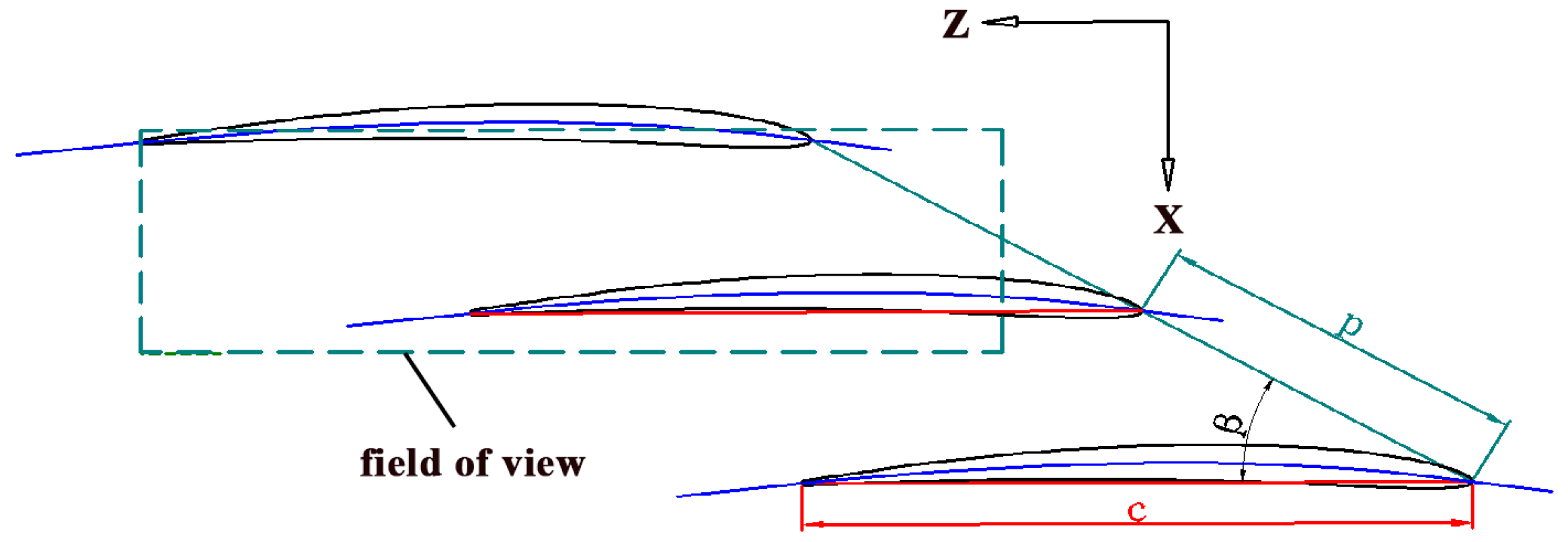
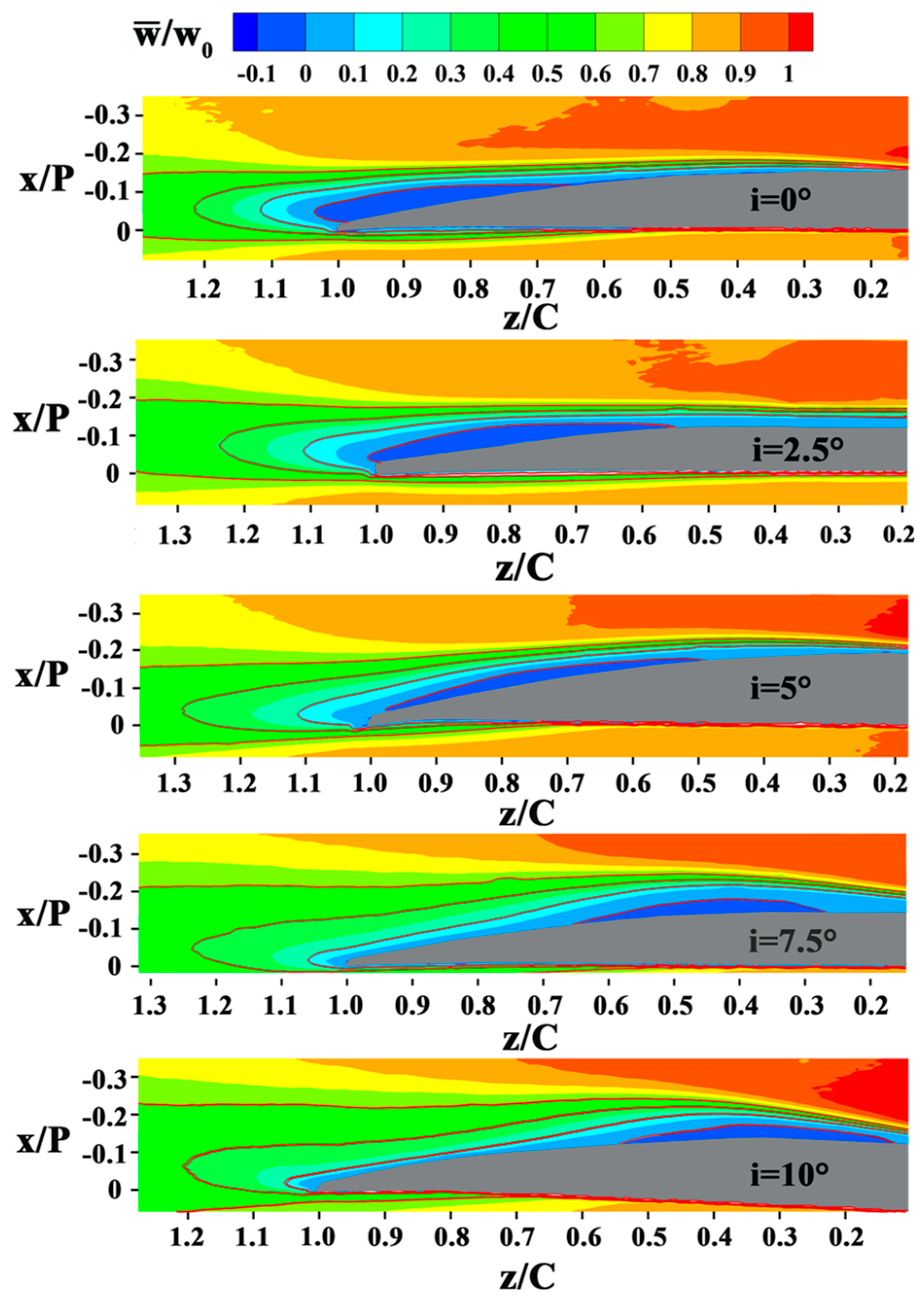
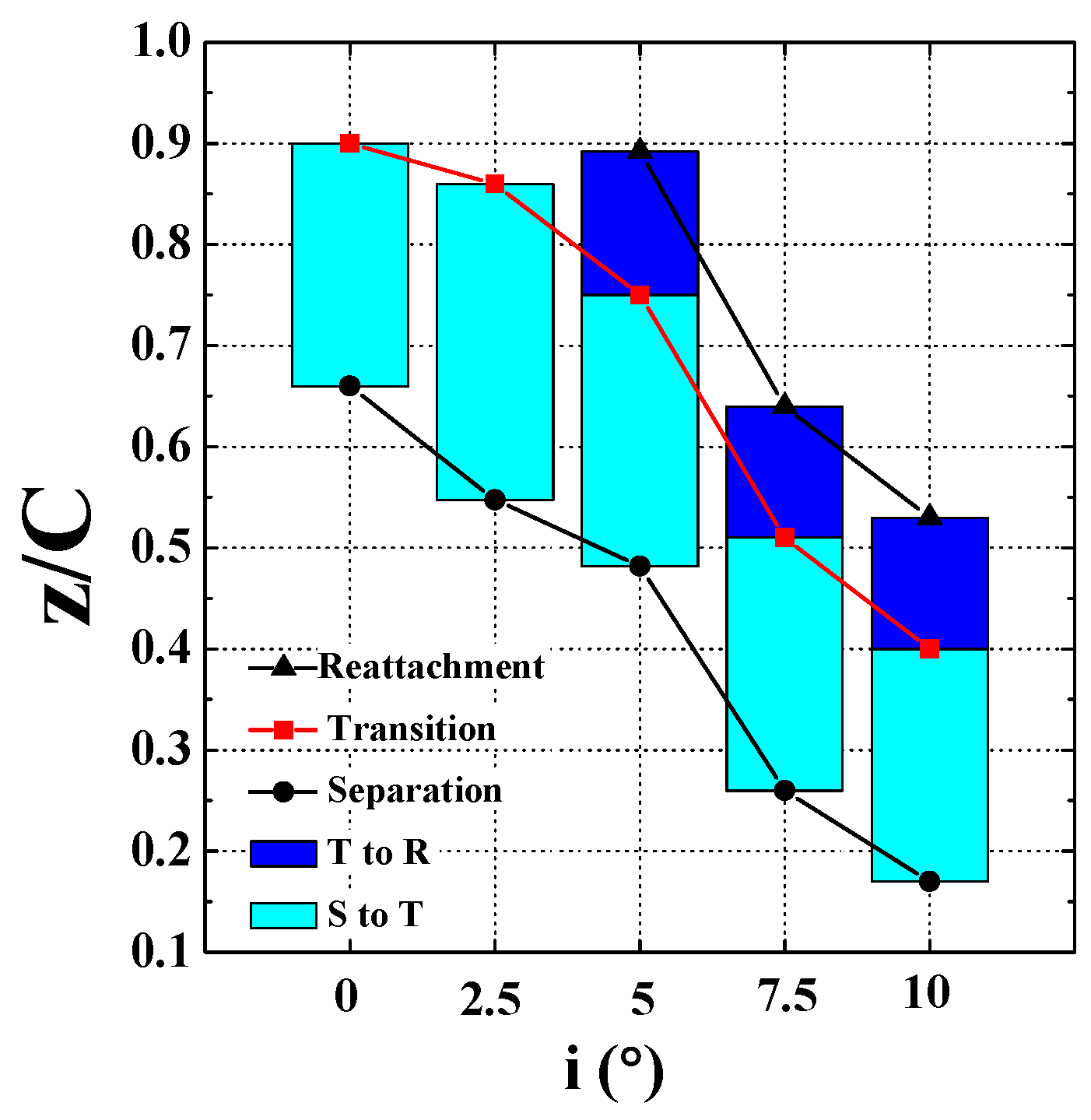
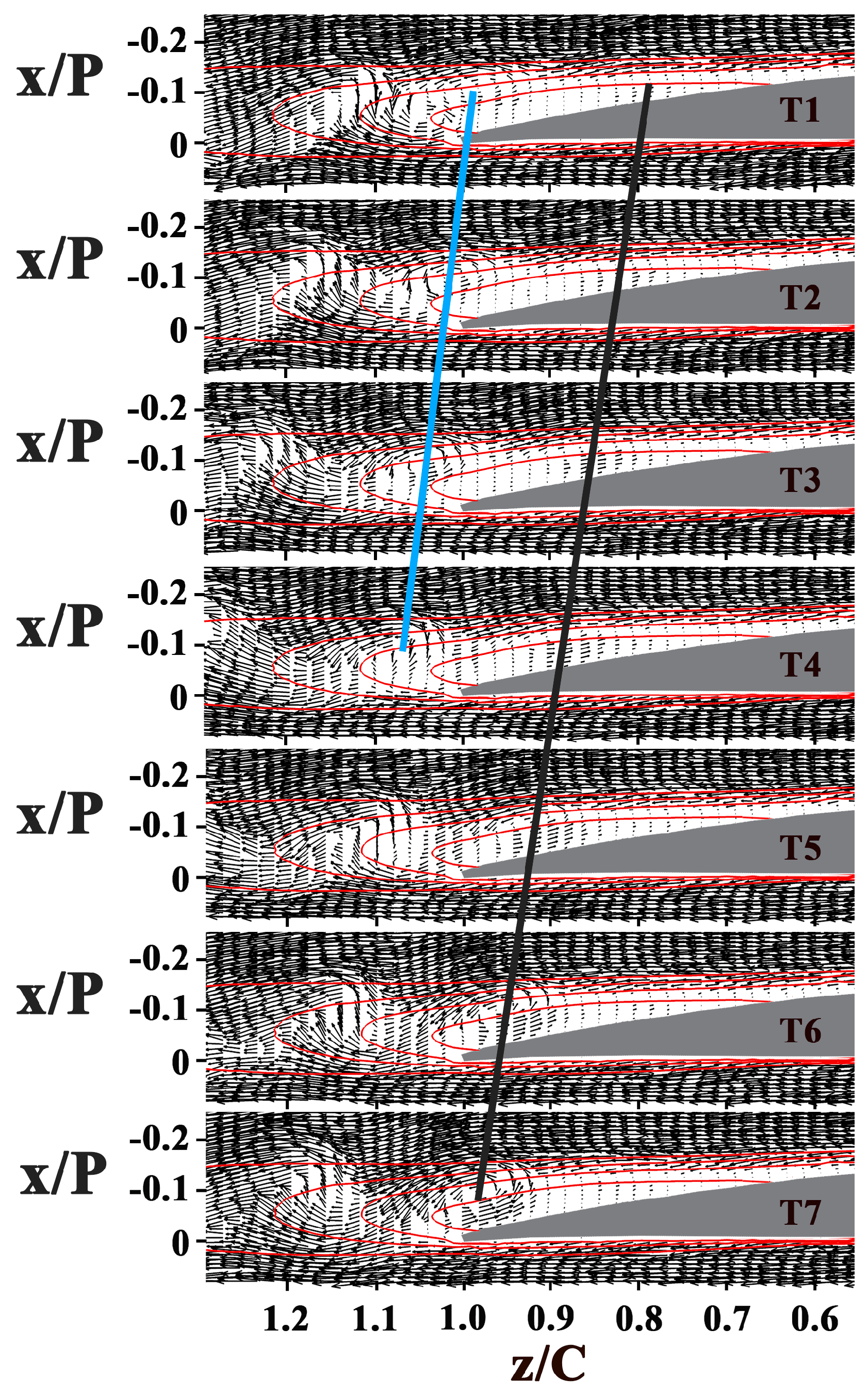
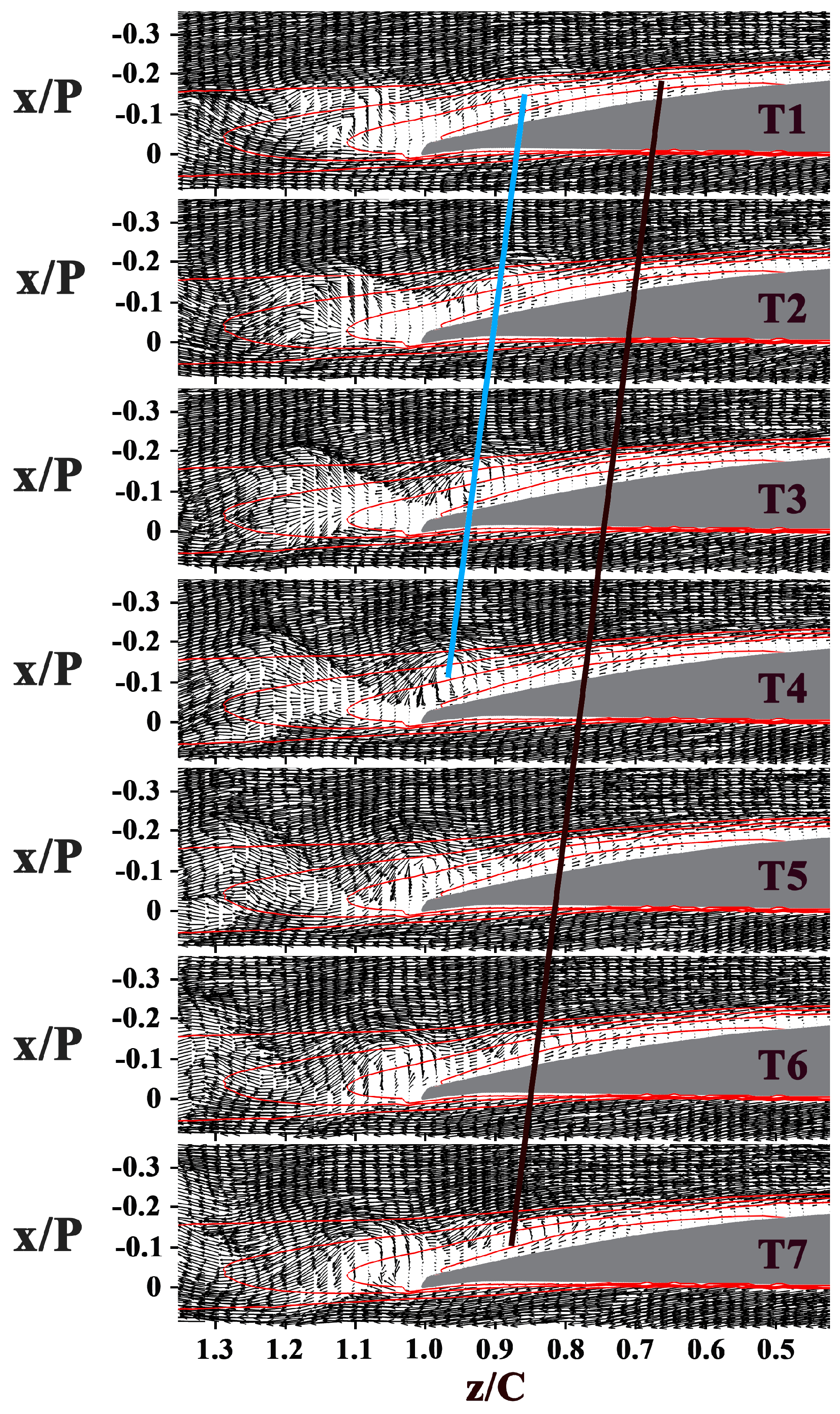
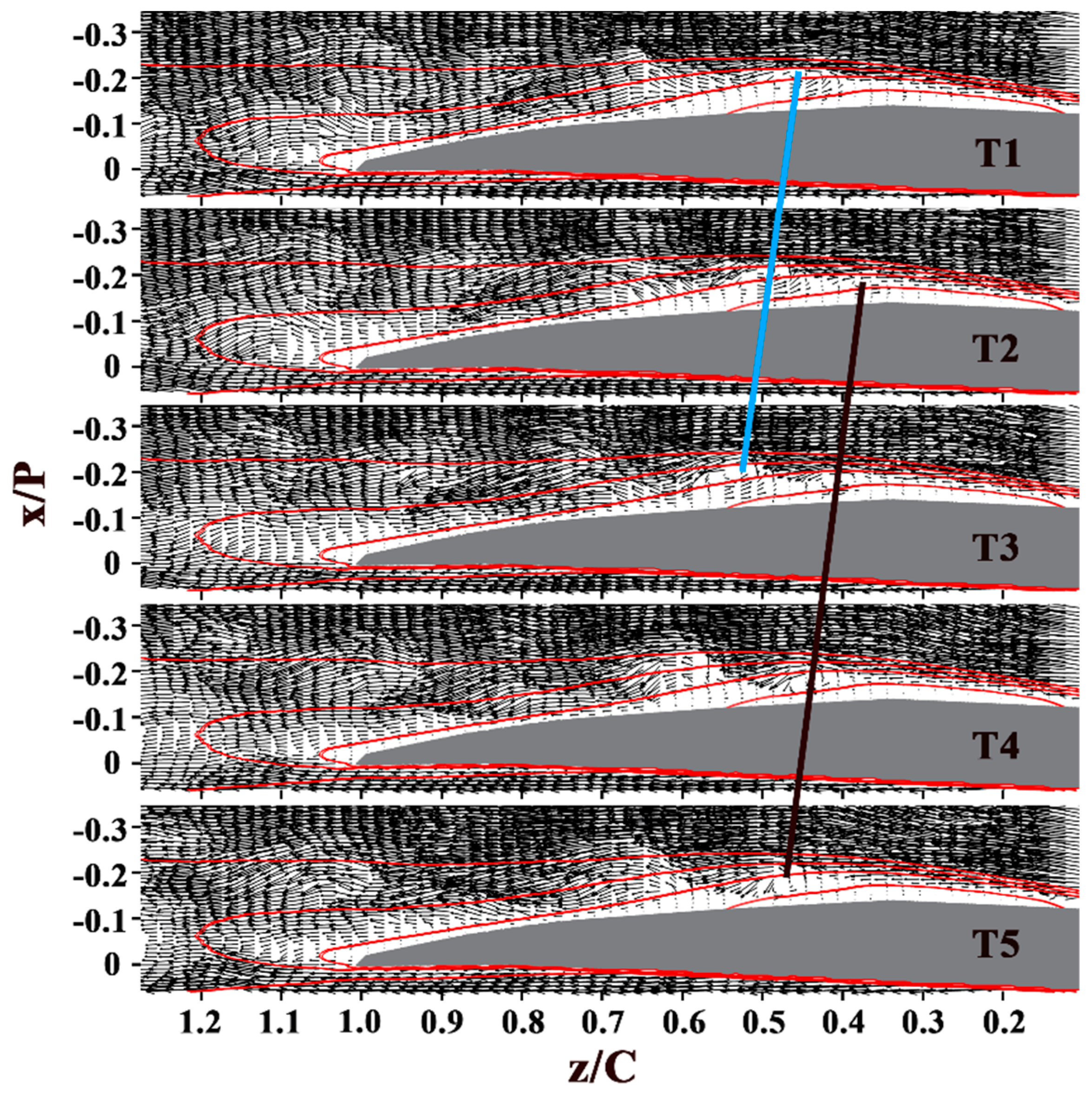
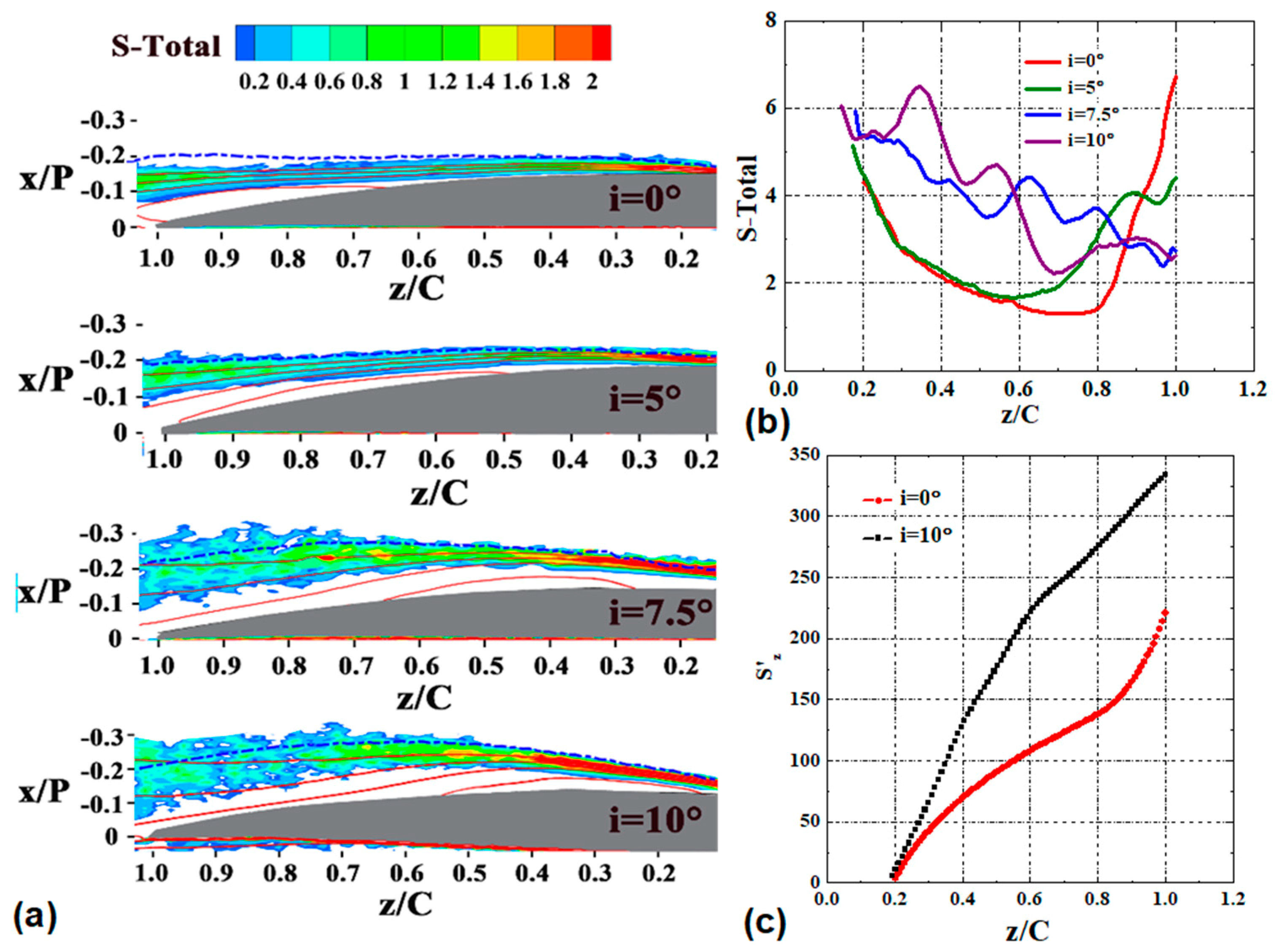
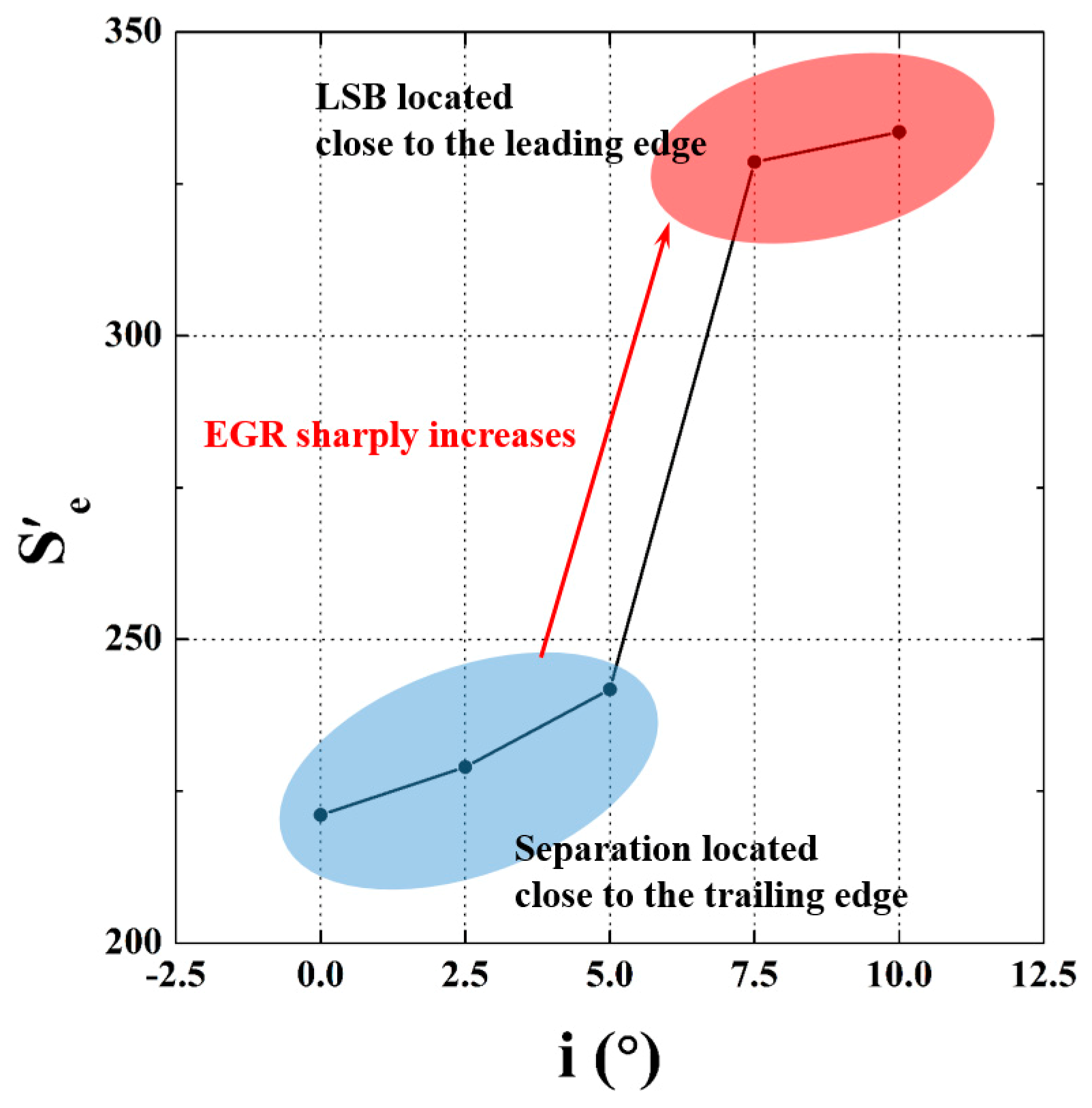
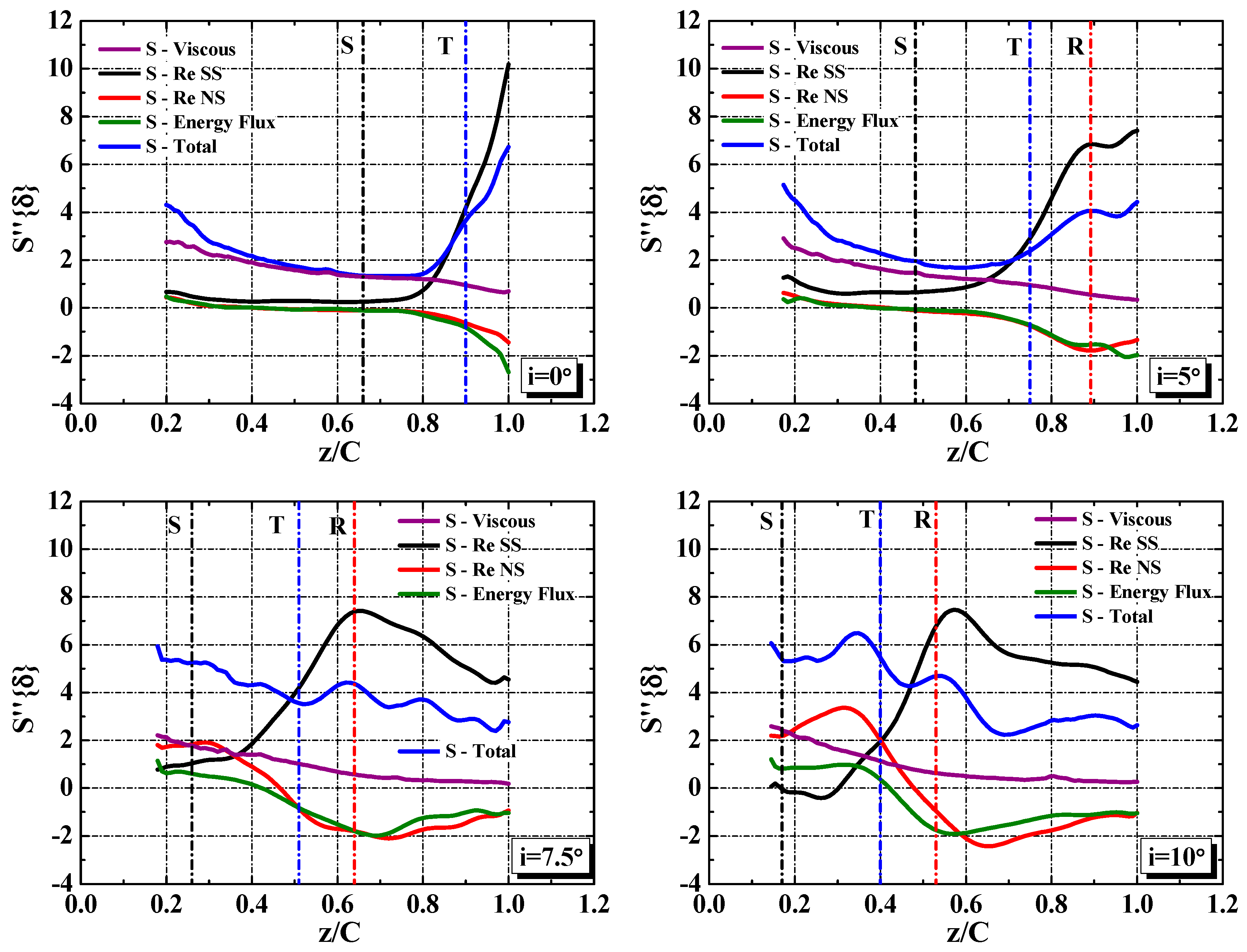

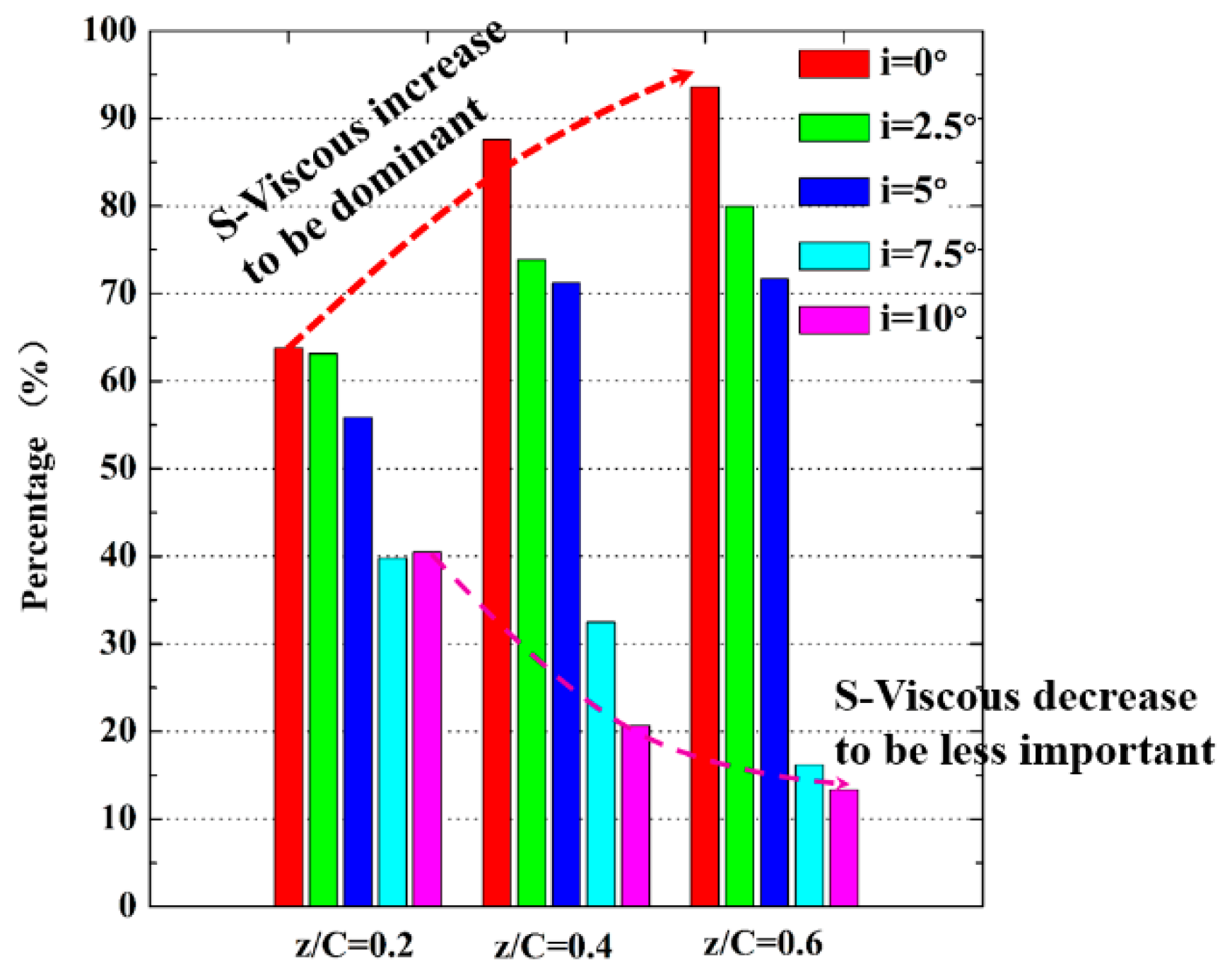
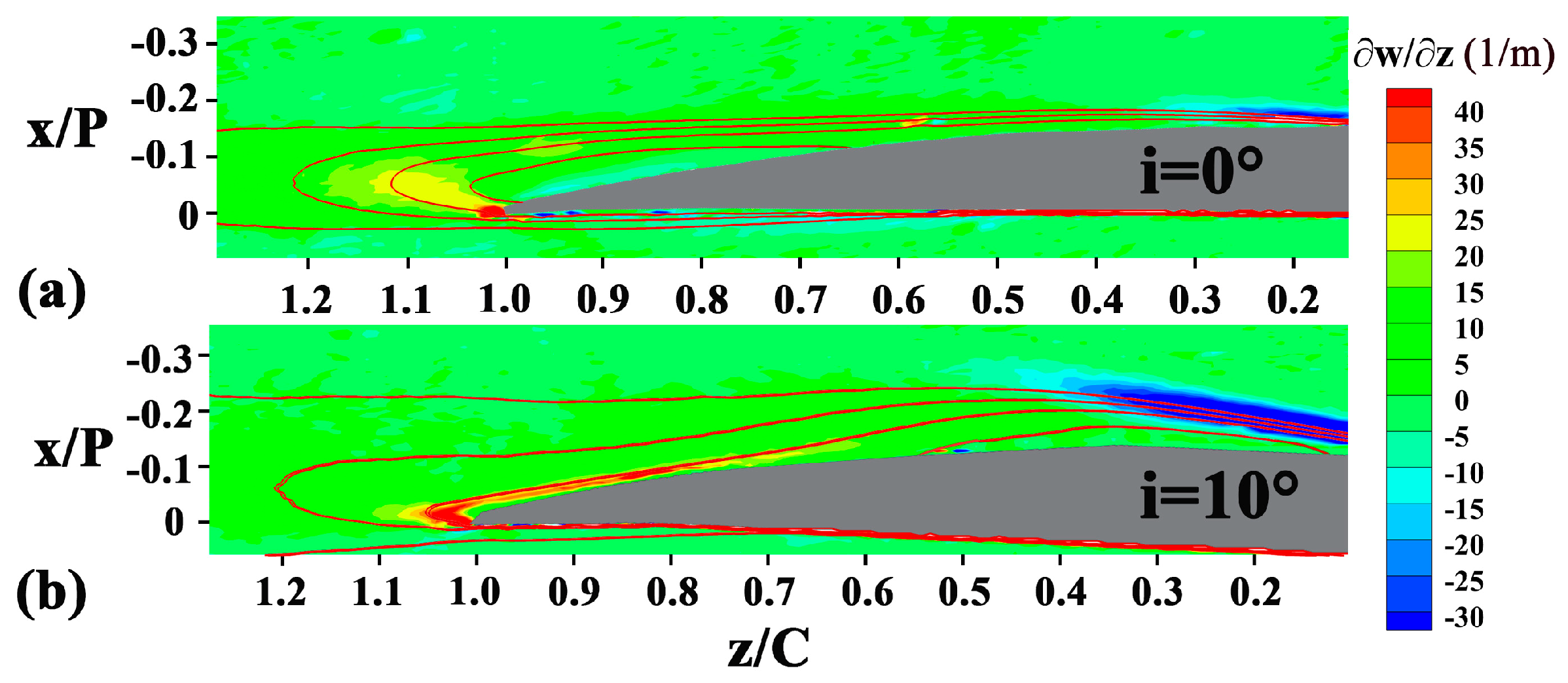
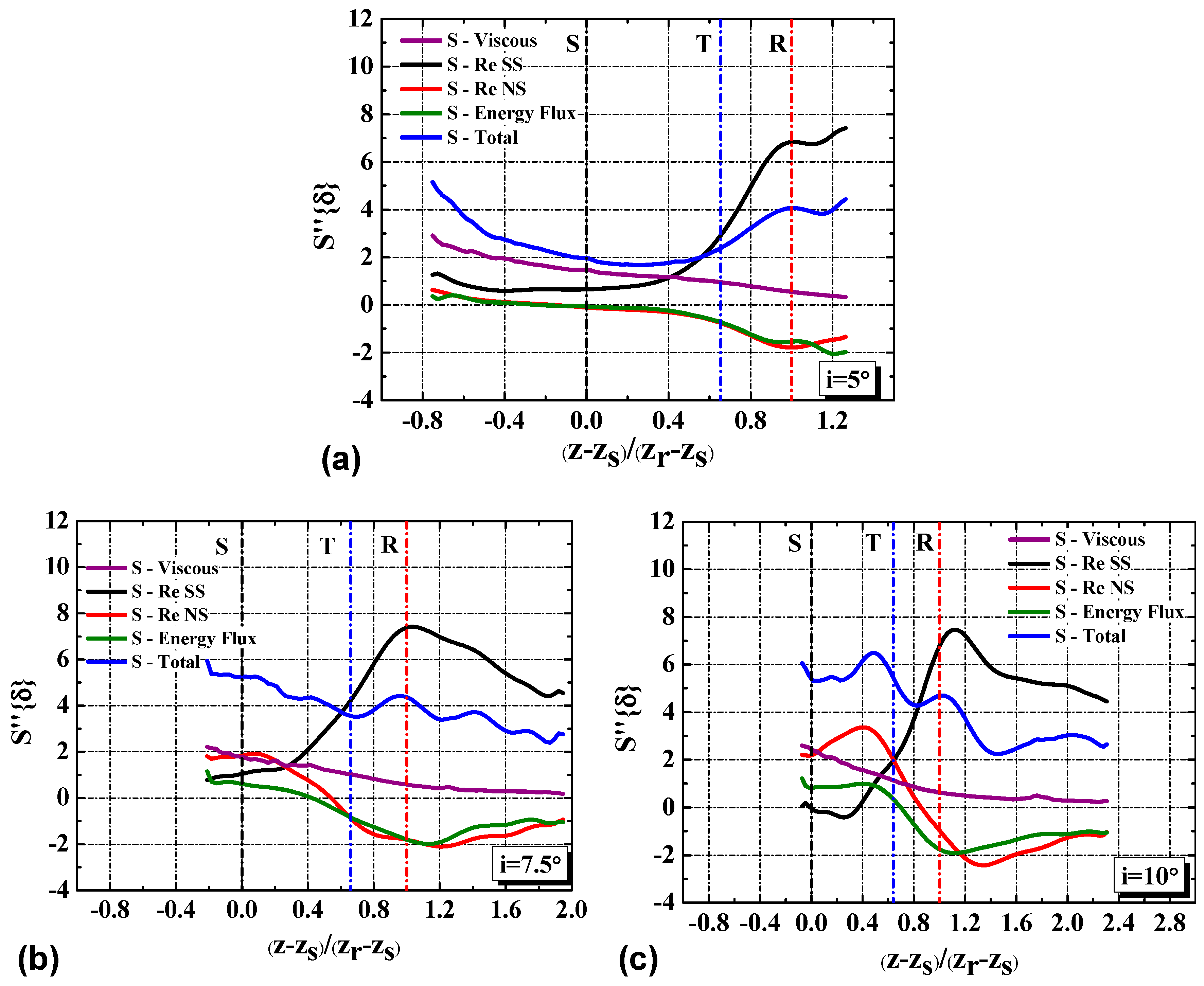
| Items | Details |
|---|---|
| Number of blades, N | 12 |
| Chord length, C | 126.8 mm |
| Span, H | 120 mm |
| Pitch, P | 72 mm |
| Incidence angle | 0°, 2.5°, 5°, 7.5°, and 10° |
| Stagger angle, β | 30° |
| Tip clearance/C | 0% |
© 2019 by the authors. Licensee MDPI, Basel, Switzerland. This article is an open access article distributed under the terms and conditions of the Creative Commons Attribution (CC BY) license (http://creativecommons.org/licenses/by/4.0/).
Share and Cite
Shi, L.; Ma, H. Effect of Incidence Angle on Entropy Generation in the Boundary Layers on the Blade Suction Surface in a Compressor Cascade. Entropy 2019, 21, 1049. https://doi.org/10.3390/e21111049
Shi L, Ma H. Effect of Incidence Angle on Entropy Generation in the Boundary Layers on the Blade Suction Surface in a Compressor Cascade. Entropy. 2019; 21(11):1049. https://doi.org/10.3390/e21111049
Chicago/Turabian StyleShi, Lei, and Hongwei Ma. 2019. "Effect of Incidence Angle on Entropy Generation in the Boundary Layers on the Blade Suction Surface in a Compressor Cascade" Entropy 21, no. 11: 1049. https://doi.org/10.3390/e21111049
APA StyleShi, L., & Ma, H. (2019). Effect of Incidence Angle on Entropy Generation in the Boundary Layers on the Blade Suction Surface in a Compressor Cascade. Entropy, 21(11), 1049. https://doi.org/10.3390/e21111049




